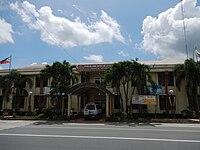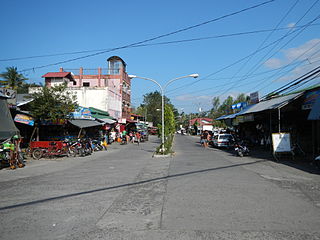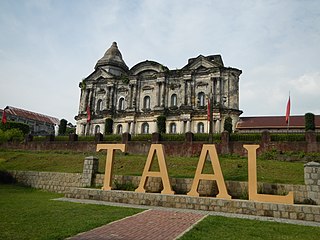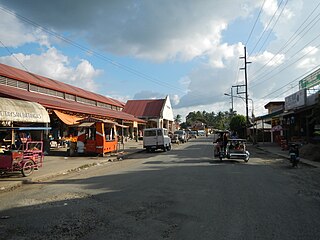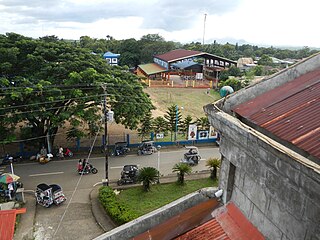This section needs additional citations for verification .(November 2016) |
Ibaan | |
|---|---|
| Municipality of Ibaan | |
 Town proper with the Church of Ibaan | |
| Nickname: Kulambo Capital of the Philippines | |
 Map of Batangas with Ibaan highlighted | |
Location within the Philippines | |
| Coordinates: 13°49′03″N121°07′59″E / 13.8176°N 121.133°E | |
| Country | Philippines |
| Region | Calabarzon |
| Province | Batangas |
| District | 4th district |
| Founded | February 11, 1832 |
| Barangays | 26 (see Barangays) |
| Government | |
| • Type | Sangguniang Bayan |
| • Mayor | Edralyn Joy A. Salvame |
| • Vice Mayor | Juvy M. Mendoza |
| • Representative | Lianda B. Bolilia |
| • Municipal Council | Members |
| • Electorate | 40,736 voters (2022) |
| Area | |
| • Total | 68.99 km2 (26.64 sq mi) |
| Elevation | 178 m (584 ft) |
| Highest elevation | 947 m (3,107 ft) |
| Lowest elevation | 5 m (16 ft) |
| Population (2020 census) [3] | |
| • Total | 58,507 |
| • Density | 850/km2 (2,200/sq mi) |
| • Households | 14,837 |
| Economy | |
| • Income class | 2nd municipal income class |
| • Revenue | ₱ 201.6 million (2020) |
| • Assets | ₱ 355.8 million (2020) |
| • Expenditure | ₱ 148 million (2020) |
| • Liabilities | ₱ 76.51 million (2020) |
| Service provider | |
| • Electricity | Ibaan Electric and Engineering Corporation (IEEC) |
| Time zone | UTC+8 (PST) |
| ZIP code | 4230 |
| PSGC | |
| IDD : area code | +63 (0)43 |
| Native languages | Tagalog |
| Website | www |
Ibaan, officially the Municipality of Ibaan (Tagalog : Bayan ng Ibaan), is a 2nd class municipality in the province of Batangas, Philippines. According to the 2020 census, it has a population of 58,507 people. [3]
Contents
- Etymology
- History
- Geography
- Barangays
- Climate
- Demographics
- Religion
- Economy
- Culture
- Festivals
- Sports
- Education
- Gallery
- References
- External links
It is a predominantly Roman Catholic community, with small percentages of Protestants and members of the Iglesia ni Cristo. Tagalog is the local language in the Batangueño dialect; however, English is included in its educational curriculum and is often used in official dealings and transactions.
Temperature is moderate both in its rainy and dry seasons, conducive to farming, agricultural and livestock production, which are the most common occupations. There are fewer farmers each year as residents switch to hog-raising, which provides better income.[ citation needed ]
Ibaan is known as the home of the "kulambo" (mosquito net), as its production and trading has become one of the most profitable businesses in the locality. Ibaan is also known for its tamales that are wrapped in banana leaves.
The town celebrates its foundation day every February 11, with a simple festival called "Les Kuhliembo Festival", featuring their products: tamales, kulambo, habi, liempo, and tubo (sugar cane).







